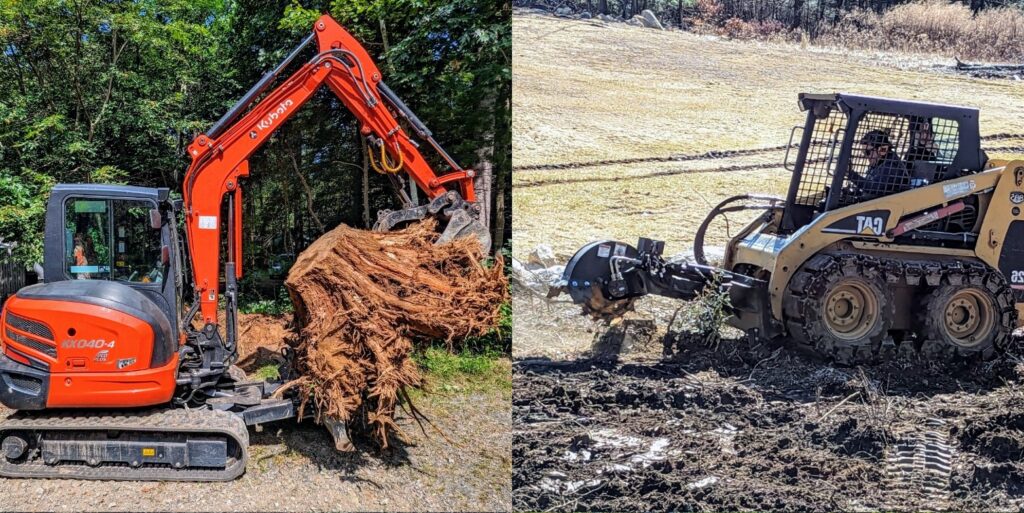
Stump Grinding:
Pros:
- Cost-Effective: Stump grinding is generally more budget-friendly than complete stump removal, making it a practical choice for many homeowners.
- Speed: This method is relatively quick, often taking only a few hours to complete, allowing you to reclaim your yard sooner.
- Appearance: Stump grinding leaves the stump below ground level, which can be easily covered with soil or mulch and landscaped over, making it less noticeable.
- Minimal Disruption: Stump grinding causes less disturbance to the surrounding area compared to complete stump removal, which may involve more extensive excavation.
Cons:
- Residual Roots: Stump grinding leaves behind the stump’s root system, which can decay over time and potentially lead to sinkholes or uneven ground in the future.
- Limited to Small-Medium Stumps: Stump grinding is less effective for large stumps with extensive root networks, where complete removal may be necessary.
Complete Stump Removal:
Pros:
- No Trace Left: Complete stump removal eliminates the stump and its entire root system, leaving no remnants behind. This is ideal for those who want a pristine, stump-free landscape.
- Planting Options: When you plan to plant a new tree in the same location or undertake extensive landscaping, complete stump removal ensures no hindrance from residual roots.
- Prevents Regrowth: Some tree species may regrow from the remaining roots after stump grinding. Complete removal eliminates this possibility.
- Safer for Construction: If you intend to build structures over the stump’s location, complete removal provides a stable and root-free foundation.
Cons:
- Higher Cost: Complete stump removal is typically more expensive due to the labor-intensive process of excavating the stump and its roots.
- Longer Duration: It takes more time to complete complete stump removal compared to stump grinding, potentially causing delays in your landscaping plans.
- Larger Disruption: The excavation process can cause more disruption to your property, including damage to nearby plants, landscaping, or hardscaping.
When to Choose Stump Grinding:
- For smaller to medium-sized stumps where cost is a concern.
- When you want a relatively quick solution that allows you to reuse the space promptly.
- When you’re not planning extensive landscaping or planting in the same location.
When to Choose Complete Stump Removal:
- For large stumps with extensive root systems that may cause future problems.
- When you want a completely clean and stump-free landscape.
- When you plan to replant in the same location or build over the stump’s area.
In conclusion, the choice between stump grinding and complete stump removal depends on your priorities, budget, and the specific circumstances of the stump. Consider the pros and cons of each method carefully to determine which one aligns best with your needs and goals for your property. Consulting with a professional tree service provider can further assist you in making the right decision for your unique situation.
Based out of Barkhamsted CT, we are family owned and operated. We offer excavation, forestry mulching, land clearing, driveway repair services, and more to Northwestern/Central CT. Give us a call to discuss your next project! 959-202-2010
